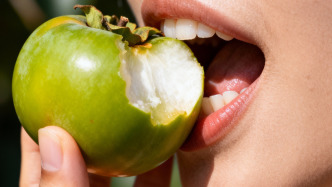
The taste and texture of food may be an important biological signal that regulates our physiological and psychological state.
When you bite into an unripe persimmon or drink a sip of red wine, the feeling that makes your tongue feel tight and your mouth feel dry is what we often call "astringency." Astringency is often associated with sourness, bitterness, and unripe things, but a recent study has found that this seemingly "unpleasant" feeling may actually hold the secret to stimulating brain and body vitality.
The study, published in the journal *Current Research in Food Science*, was authored by a research team from institutions including Shibaura Institute of Technology in Japan. Through experiments on mice, the researchers discovered that flavanols, a class of substances with a characteristic astringent taste, can significantly impact behavior, cognition, and autonomic nervous system function by stimulating the digestive tract and activating key neural systems in the brain.
Traditionally, the effects of food on the body are primarily attributed to the absorption of its nutrients into the bloodstream. However, many astringent substances found in cocoa, red wine, and berries, such as flavanols, have extremely low bioavailability, meaning they are difficult for the body to absorb. But previous experiments have shown that flavanol intake can quickly trigger a series of physiological changes, including increased blood flow, improved attention, and enhanced short-term memory.
"Astringency is a very unique stimulus, possessed only by a few polyphenolic compounds. We wanted to know whether this sensation itself, rather than the absorption of the substance, can directly affect the nervous system," the authors wrote in their paper.
The core of this research lies in revealing the remarkable role of the "gut-brain axis." The gut-brain axis refers to the continuous two-way communication between the gut and the brain; the gut is rich in neural networks, acting like a "second brain." The study found that astringent substances may utilize this pathway.
Researchers administered flavanols, extracted from cocoa, to mice via gavage. Flavanols are a class of substances that give chocolate and tea their astringent taste. The experiment found that mice that ingested flavanols exhibited significantly increased spontaneous activity (such as moving, standing, and grooming) and appeared more alert and excited.
In the "new object recognition test" (a behavioral experiment assessing short-term memory), mice that ingested flavanols exhibited stronger memory. They were able to explore newly appearing objects for a longer period, indicating that they clearly remembered which ones were "old."
To explore the underlying mechanisms, the research team used mass spectrometry imaging to observe the dynamic changes in neurotransmitters in the mouse brain. The results showed that after the ingestion of flavanols, a region in the brain called the locus coeruleus (LC) was rapidly activated.
The locus coeruleus is an "alarm and arousal center" in the brain and a major source of norepinephrine (NA), a neurotransmitter responsible for regulating our arousal, attention, and stress response. It's when you suddenly hear a loud noise and your heart races and your mind becomes highly focused that it's at work.
Researchers hypothesize that when flavanols enter the mouth and digestive tract, their astringent properties stimulate sensory nerves in the digestive tract. This sensory signal is treated as a "stress" or "novelty" stimulus and transmitted via neural pathways to the brainstem. The signal reaches and "ignites" the locus coeruleus, causing it to release large amounts of norepinephrine into various areas of the brain, including the hippocampus, which is responsible for memory, and the hypothalamus, which is responsible for arousal. Ultimately, this neurotransmitter "storm" leads to mice becoming more alert, active, and experiencing enhanced memory.
"Our research shows that the sensory properties of food (such as astringency) are crucial for maintaining homeostasis and promoting human health," the authors concluded. "This means that the taste and texture of food may themselves be an important biological signal that regulates our physiological and psychological states."
This research not only unravels some of the mysteries surrounding the role of astringent substances but also reveals a health regulation mechanism different from simple nutrient absorption. It tells us that eating is not just about absorbing nutrients, but also a complex "dialogue" with the brain. In the future, it may be possible to develop "sensory nutrients" and drugs that utilize specific tastes to regulate physical and mental states, providing new insights for improving cognitive function and mental well-being.
References:
Fujii, Y., Taira, S., Shinoda, K. et al. Astringent flavanol fires the locus-noradrenergic system, regulating neurobehavior and autonomic nerves. Curr Res Food Sci (2025). https://doi.org/10.1016/j.crfs.2025.101195